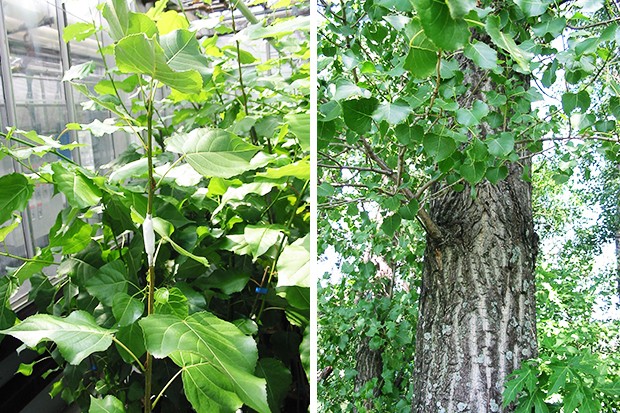The private life of plants ... at Concordia
 Pat Gulick studies amaryllis, which are very drought tolerant. | Photo by Ruth (Flickr CC)
Pat Gulick studies amaryllis, which are very drought tolerant. | Photo by Ruth (Flickr CC)
We’re surrounded by plants, from the trees over our heads to the grass under our feet.
Some of us may not give much thought to them, but for two Concordia experts they’re constantly top of mind. We caught up with Selvadurai Dayanandan and Pat Gulick, both biology professors in the Faculty of Arts and Science who are involved in plant research, to learn more about their work.
Selvadurai Dayanandan: a lifelong fascination
I have been interested in plant sciences since my childhood. I studied plant biology as an undergraduate and continued through my graduate studies.
As a master’s student, I spent countless hours on the canopies of tropical rainforest trees studying the reproductive biology of the family Dipterocarpaceae, some of the tallest and most abundant trees in Asian rainforests.
During this time, I became fascinated with the extraordinarily high biodiversity in rainforests, and developed research interests focused on understanding the origin and maintenance of biodiversity in forest and agricultural landscapes.
 Selvadurai Dayanandan's research focuses on reconstructing the evolutionary relationships of poplars.
Selvadurai Dayanandan's research focuses on reconstructing the evolutionary relationships of poplars.
My research program uses a variety of tools, including genetics, genomics and ecological niche modelling to study how plant species have evolved, and how they are affected by alteration or loss of habitats and changes in the climate.
My research team analyzes the DNA sequences of genomes of selected plants in various geographical regions and correlates this with the geological history of the region, including past climates such as glaciation during ice ages, movement of continents and fossil records, to infer the evolutionary origin of species.
In addition to tropical plants, we have been studying many temperate forest trees including poplars, pines and birches in North America.
Part of our research group’s work has been focused on reconstructing the evolutionary relationships of the genus Populus (poplars), one of the ecologically and economically important groups of forest trees in North America and Europe.
We showed evidence of ancient hybridization, and the uni-directional nature (one species mainly acts as male and the other as female) of hybridization in Populus jackii, one of the hybrid poplars used in forest tree plantations in Quebec.
We are currently studying the interactions among microbes (fungi and bacteria) living within poplar trees and their impact on other known mutualistic and pathogenic microbes in poplars.
This research is valuable for uncovering hidden biological diversity among microbes living within trees, and developing biocontrol agents against plant pathogens to improve productivity of forest tree plantations in Quebec and elsewhere.
Pat Gulick: the hardiness of the houseplant
My grandfather and my mother loved gardening. I was caught up in their appreciation for plant diversity and the ways plants grow. I added that to a fascination with molecular biology and ended up obtaining a PhD in plant genetics.
My graduate students and I study how plants resist environmental stresses such as drought and high salinity in the soil. We study the genes that are activated by stress conditions and determine if these contribute to plants’ ability to tolerate and survive stress conditions.
It’s clear that some plant species have a remarkable ability to tolerate extreme cold, high salt and lack of water. As molecular geneticists, we try to identify the genes that enable plants to survive stresses and to decipher the molecular mechanisms and networks of molecular regulation in which these genes function.
My research made me aware of the remarkable drought tolerance of plants around us, particularly house plants. Often people tell me that they can’t keep house plants alive — and it always makes me think that some types of plants are particularly tough in addition to being beautiful.
For example, amaryllis, which have large, beautiful red flowers that bloom indoors in March, can really manage fine, even if you forget to water them for a few weeks. Phalaenopsis orchids are in bloom now and will continue for months, and are also very drought tolerant — though weekly watering is best.
It’s a big challenge to determine if genes that appear to be beneficial to plants that are well characterized experimentally can be applied to agricultural crops.
My new dream project is to study the potential for genetic resistance to a rust disease affecting coffee plants in Central America. Some types of coffee appear to be pretty resistant, so I think there are good methodologies for finding the resistance genes.
Find out more about Concordia's Department of Biology.




